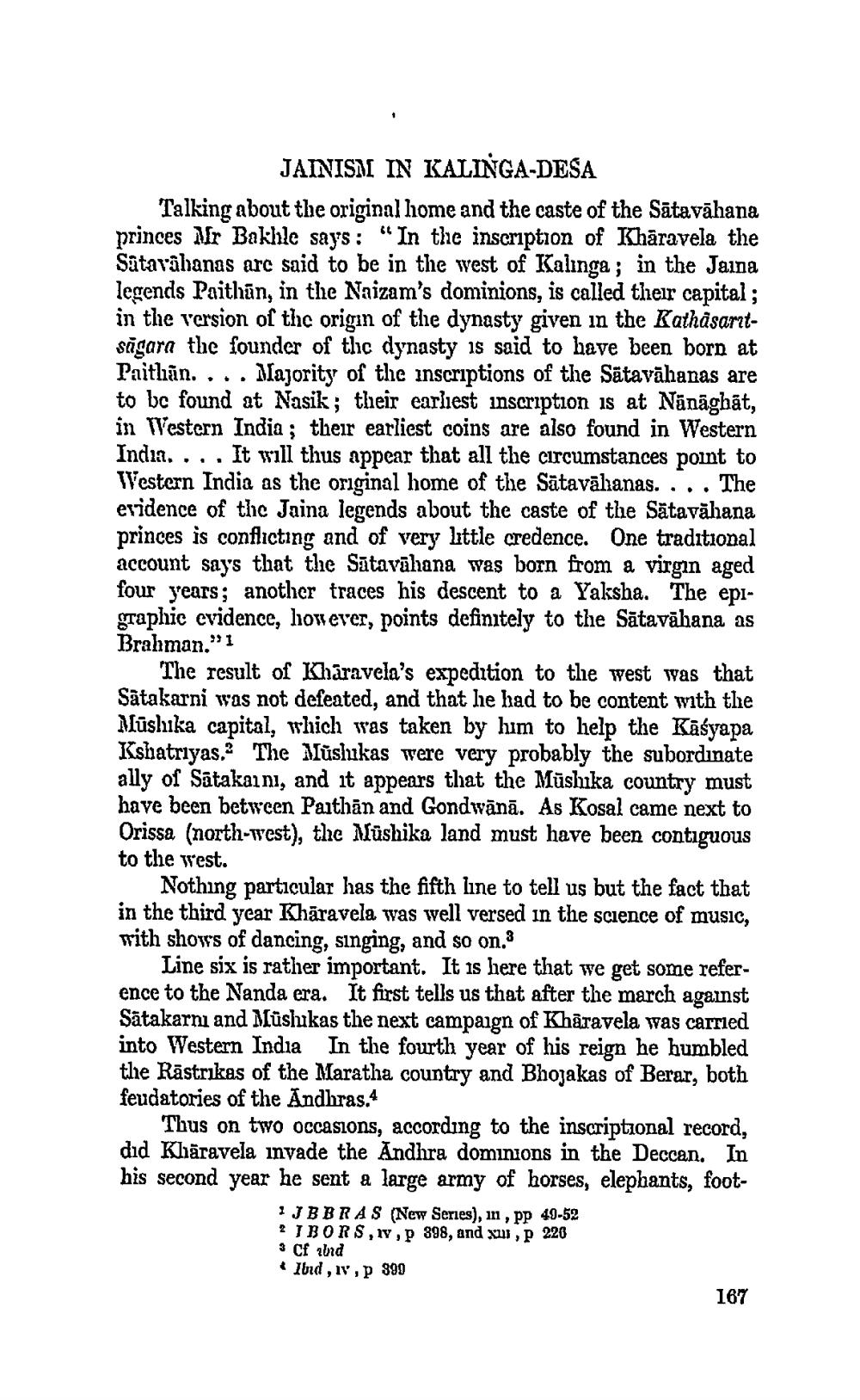________________ JAINISM IN KALINGA-DESA Talking about the original liome and the caste of the Satavahana princes Mr Bakhle says: "In the inscription of Kharavela the Satavahanas arc said to be in the west of Kalinga ; in the Jaina legends Paithan, in the Naizam's dominions, is called their capital; in the version of the origin of the dynasty given in the Kathasartsagara the founder of the dynasty is said to have been born at Paitlian. ... Majority of the inscriptions of the Satavahanas are to bc found at Nasik; their carliest inscription is at Nanaghat, in Western India; their earliest coins are also found in Western India. ... It will thus appear that all the circumstances point to Western India as the original home of the Satavahanas. ... The evidence of the Jaina legends about the caste of the Satavahana princes is conflicting and of very little credence. One traditional account says that the Sitavahana was born from a virgin aged four years; another traces his descent to a Yaksha. The epigraphic evidence, however, points definitely to the Satavahana as Brahman." 1 The result of Kharavela's expedition to the west was that Satakarni was not defeated, and that he had to be content with the Musluka capital, which was taken by him to help the Kasyapa Kshatriyas." The Muslukas were very probably the subordinate ally of Sataka ni, and it appears that the Mushika country must have been between Paithan and Gondwana. As Kosal came next to Orissa (north-west), the Mushika land must have been contiguous to the west. Nothing particular has the fifth line to tell us but the fact that in the third year Kharavela was well versed in the science of music, with shows of dancing, singing, and so on. Line six is rather important. It is here that we get some reference to the Nanda era. It first tells us that after the march against Satakarni and Muslukas the next campaign of Kharavela was carried into Western India In the fourth year of his reign he humbled the Rastrikas of the Maratha country and Bhojakas of Berar, both feudatories of the Andhras. Thus on two occasions, according to the inscriptional record, did Klaravela invade the Andhra dominions in the Deccan. In his second year he sent a large army of horses, elephants, foot JBBRAS (New Series), 111, pp 49-52 * IBORS,1,P 898, and Xu, P 226 Cf and Zbid ,1,899 167




